Saudi Arabia’s power sector motors on
11 September 2024

Saudi Arabia’s power sector has sustained its project activity momentum over the past six months.
The principal buyer, Saudi Power Procurement Company (SPPC), awarded the contracts to develop two publicly-tendered wind independent power producer (IPP) projects, with a total combined capacity of 1,100MW, under the fourth round of the kingdom’s National Renewable Energy Programme (NREP).
The Public Investment Fund (PIF), responsible for procuring through direct negotiations 70% of the kingdom’s 2030 target renewable energy capacity, let three large-scale solar photovoltaic (PV) projects with a total combined capacity of around 5,500MW.
State majority-owned Saudi Aramco also awarded a contract to develop an independent cogeneration project with an electricity generation capacity of 475MW.
During the same period, SPPC began the tendering process for two combined-cycle gas turbine (CCGT) projects, the Remah and Nairiyah IPPs, each with a capacity of 3,600MW, and for four solar PV schemes with a total combined capacity of 3.7GW under the NREP fifth round.
“It has been a very busy summer,” notes a senior executive with an international utility developer, referring to the submission of bids in August for the contracts to develop the Remah 1 & 2, Nairiyah 1 & 2, and the NREP round-five solar PV schemes.
Notably, the principal buyer has initiated the selection process for consultants who will advise on its next pair of independent CCGT power plants – the 2,400MW Al-Rais and the 3,600MW Riyadh 16 projects.
Saudi Electricity Company (SEC) and SPPC are also understood to be conducting bilateral talks for the development of five CCGT power plants, which, along with those currently being built or tendered, support the kingdom’s mandate to replace fleets running on liquid fuel.
Essentially, the reported SEC projects, each with a capacity of 1,500MW-2,000MW, bear some similarities to PIF’s directly negotiated renewable energy schemes.
These projects help substantiate previous reports that SEC has been seeking to lock in gas turbine equipment deals with a total capacity of 30GW, in line with an overall capacity expansion plan within and outside Saudi Arabia.
The next few years can only get busier, with Saudi Arabia's Energy Minister, Prince Abdulaziz Bin Salman Bin Abdulaziz Al-Saud, confirming in June plans to tender 20,000MW of renewable energy projects annually starting this year, in line with reaching 100GW-130GW of installed capacity by 2030, "depending on electricity demand growth".
This represents a major upward revision to the official 2030 renewable energy capacity target of 58,700MW.
However, it is unclear if this new target considers the renewable capacity that will be installed to power Neom, Saudi Arabia’s largest gigaproject, as well as the requirement of green hydrogen projects that the PIF plans to codevelop.
Wind IPPs
In May, SPPC awarded a team led by Japanese utility developer Marubeni Corporation the contracts to develop the 600MW Al-Ghat wind and 700MW Waad Al-Shamal wind IPPs.
The team of Marubeni and its partner, the local Alajlan Brothers, is also expected to win the contract to develop the 700MW Yanbu wind IPP, the final wind scheme included in NREP’s round four.
These are important awards for Marubeni, which last won an IPP contract in Saudi Arabia in 2021 for the 300MW Rabigh solar scheme.
Notably, the Al-Ghat and Waad Al-Shamal wind IPPs will be developed at world-record-low levelised electricity costs of $c1.565 a kilowatt-hour (kWh), or roughly 5.87094 halalas/kWh, and $c1.70187/kWh or 6.38201 halalas/kWh.
PIF projects
In June, three Saudi utility developers and investors signed power-purchase agreements (PPAs) with SPPC to develop and operate three solar PV projects with a combined capacity of 5,500MW.
The Haden and Muwayh solar PVs, located in Mecca, will each have a capacity of 2,000MW, while the Al-Khushaybi solar PV power plant in Qassim will be able to generate 1,500MW of electricity.
The team that will develop the three projects consists of Acwa Power, PIF-backed Water & Electricity Holding Company (Badeel) and Saudi Aramco Power Company (Sapco), a subsidiary of the state majority-owned oil giant.
The project companies formed for each solar IPP have since signed financing documents for the projects, which will require a total investment of SR12.3bn ($3.3bn). The financing sought was $2.6bn.
These projects comprise round four of PIF’s Price Discovery Scheme, with Acwa Power as the preferred developer partner.
Energy storage systems
The scale of new conventional and renewable energy capacity being developed in the kingdom – some 3,500MW of solar PV and wind capacity is now online, with over 10,500MW under construction – has increased the urgency to build energy storage systems to balance the kingdom’s energy system and stabilise its grid.
SPPC has signalled plans to procure gigawatt-sized battery energy storage systems (bess) using an IPP model. The tendering process for the first bess IPP package is expected to begin by the year-end or early 2025.
In parallel, National Grid Saudi Arabia, an SEC subsidiary, has started awarding contracts to build energy storage systems capacity using an engineering, procurement and construction (EPC) model. The local Algihaz Holding is understood to have won the contracts to build four energy storage systems in Najran, Madaya and Khamis Mushait, which will have a total combined capacity of 7.8 gigawatt-hours (GWh).
Also in August, SEC tendered contracts for the construction of five battery energy storage systems with a total combined capacity of 2,500MW, or roughly 10GWh.
The planned facilities, each with a capacity of 500MW or roughly 2GWh, are located in or within the proximity of the following key cities and load centres:
- Riyadh
- Qaisumah
- Dawadmi
- Al-Jouf
- Rabigh
Saudi Arabia’s plan to build its first large-scale nuclear power plant in Duwaiheen, which appeared to be making progress before October last year, has faced delays following shifting geopolitics involving stakeholders that include the US and Israel. The tender bid deadline for nuclear technology providers is understood to have been postponed and no new date has been set.
As it is, Saudi Arabia’s ever-expanding power projects pipeline, particularly for renewables and bess, will require investors, contractors and lenders to allocate sizeable resources, perhaps more than they have historically done in the past, over the next several years as various stakeholders endeavour to meet Vision 2030-tied peak demand scenarios.
This applies less to CCGT projects, which, pending a clear carbon-capture strategy from the offtaker or the Energy Ministry, appear to attract a decreasing number of developers and investors.
Exclusive from Meed
-
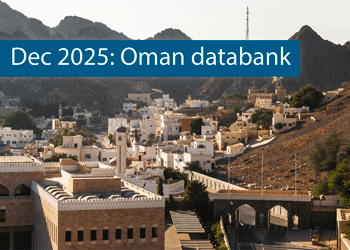 Oman’s growth forecast points upwards
Oman’s growth forecast points upwards24 December 2025
-
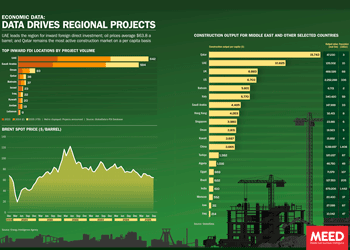 December 2025: Data drives regional projects
December 2025: Data drives regional projects23 December 2025
-
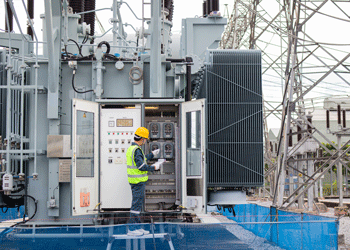 Local firm bids lowest for Kuwait substation deal
Local firm bids lowest for Kuwait substation deal22 December 2025
-
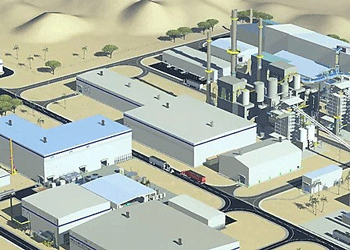 Saudi-Dutch JV awards ‘supercentre’ metals reclamation project
Saudi-Dutch JV awards ‘supercentre’ metals reclamation project22 December 2025
-
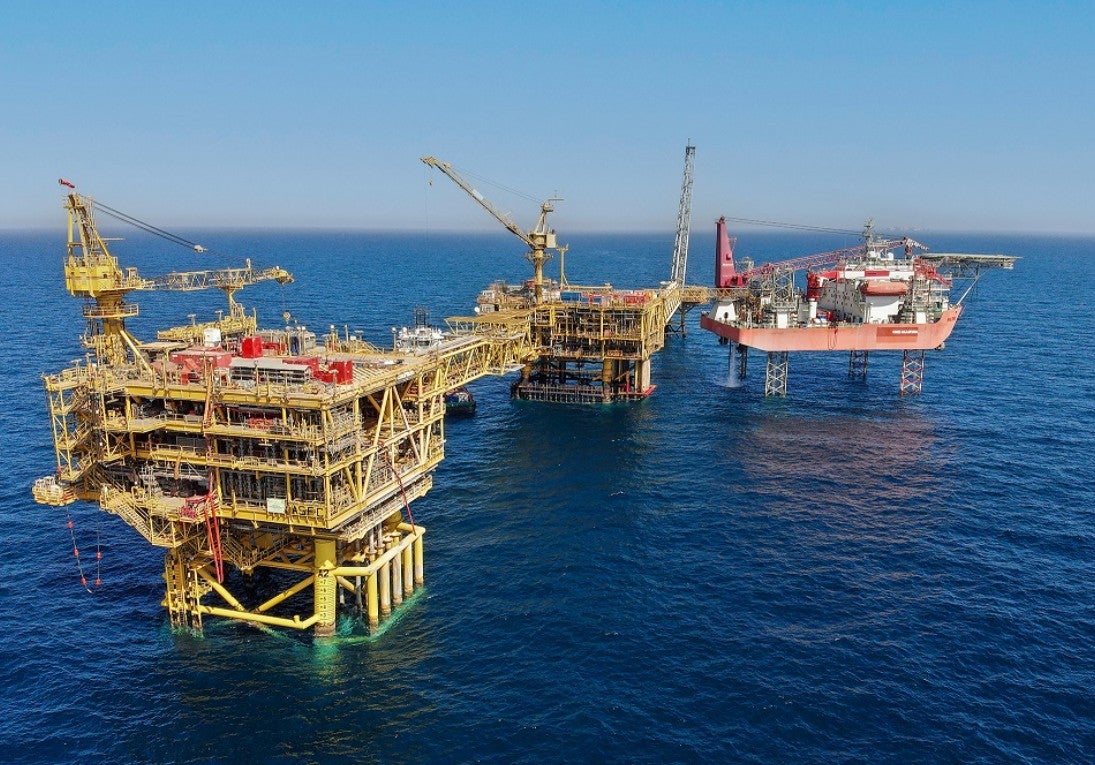 QatarEnergy LNG awards $4bn gas project package
QatarEnergy LNG awards $4bn gas project package22 December 2025
All of this is only 1% of what MEED.com has to offer
Subscribe now and unlock all the 153,671 articles on MEED.com
- All the latest news, data, and market intelligence across MENA at your fingerprints
- First-hand updates and inside information on projects, clients and competitors that matter to you
- 20 years' archive of information, data, and news for you to access at your convenience
- Strategize to succeed and minimise risks with timely analysis of current and future market trends

Related Articles
-
 Oman’s growth forecast points upwards
Oman’s growth forecast points upwards24 December 2025

MEED’s January 2026 report on Oman includes:
> COMMENT: Oman steadies growth with strategic restraint
> GVT & ECONOMY: Oman pursues diversification amid regional concerns
> BANKING: Oman banks feel impact of stronger economy
> OIL & GAS: LNG goals galvanise Oman’s oil and gas sector
> POWER & WATER: Oman prepares for a wave of IPP awards
> CONSTRUCTION: Momentum builds in construction sectorTo see previous issues of MEED Business Review, please click herehttps://image.digitalinsightresearch.in/uploads/NewsArticle/15306449/main.gif -
 December 2025: Data drives regional projects
December 2025: Data drives regional projects23 December 2025
Click here to download the PDF
Includes: Top inward FDI locations by project volume | Brent spot price | Construction output
MEED’s January 2026 report on Oman includes:
> COMMENT: Oman steadies growth with strategic restraint
> ECONOMY: Oman pursues diversification amid regional concerns
> BANKING: Oman banks feel impact of stronger economy
> OIL & GAS: LNG goals galvanise Oman’s oil and gas sector
> POWER & WATER: Oman prepares for a wave of IPP awards
> CONSTRUCTION: Momentum builds in construction sectorTo see previous issues of MEED Business Review, please click herehttps://image.digitalinsightresearch.in/uploads/NewsArticle/15306140/main.gif -
 Local firm bids lowest for Kuwait substation deal
Local firm bids lowest for Kuwait substation deal22 December 2025
The local Al-Ahleia Switchgear Company has submitted the lowest price of KD33.9m ($110.3m) for a contract to build a 400/132/11 kV substation at the South Surra township for Kuwait’s Public Authority for Housing Welfare (PAHW).
The bid was marginally lower than the two other offers of KD35.1m and KD35.5m submitted respectively by Saudi Arabia’s National Contracting Company (NCC) and India’s Larsen & Toubro.
PAHW is expected to take about three months to evaluate the prices before selecting the successful contractor.
The project is one of several transmission and distribution projects either out to bid or recently awarded by Kuwait’s main affordable housing client.
This year alone, it has awarded two contracts worth more than $100m for cable works at its 1Z, 2Z, 3Z and 4Z 400kV substations at Al-Istiqlal City, and two deals totalling just under $280m for the construction of seven 132/11kV substations in the same township.
Most recently, it has tendered two contracts to build seven 132/11kV main substations at its affordable housing project, west of Kuwait City. The bid deadline for the two deals covering the MS-01 through to MS-08 substations is 8 January.
https://image.digitalinsightresearch.in/uploads/NewsArticle/15305745/main.gif -
 Saudi-Dutch JV awards ‘supercentre’ metals reclamation project
Saudi-Dutch JV awards ‘supercentre’ metals reclamation project22 December 2025
The local Advanced Circular Materials Company (ACMC), a joint venture of the Netherlands-based Shell & AMG Recycling BV (SARBV) and local firm United Company for Industry (UCI), has awarded the engineering, procurement and construction (EPC) contract for the first phase of its $500m-plus metals reclamation complex in Jubail.
The contract, estimated to be worth in excess of $200m, was won by China TianChen Engineering Corporation (TCC), a subsidiary of China National Chemical Engineering Company (CNCEC), following the issue of the tender in July 2024.
Under the terms of the deal, TCC will process gasification ash generated at Saudi Aramco’s Jizan refining complex on the Red Sea coast to produce battery-grade vanadium oxide and vanadium electrolyte for vanadium redox flow batteries. AMG will provide the licensed technology required for the production process.
The works are the first of four planned phases at the catalyst and gasification ash recycling ‘Supercentre’, which is located at the PlasChem Park in Jubail Industrial City 2 alongside the Sadara integrated refining and petrochemical complex.
Phase 2 will expand the facility to process spent catalysts from heavy oil upgrading facilities to produce ferrovanadium for the steel industry and/or additional battery-grade vanadium oxide.
Phase 3 involves installing a manufacturing facility for residue-upgrading catalysts.
In the fourth phase, a vanadium electrolyte production plant will be developed.
The developers expect a total reduction of 3.6 million metric tonnes of carbon dioxide emissions a year when the four phases of the project are commissioned.
SARBV first announced its intention to build a metal reclamation and catalyst manufacturing facility in Saudi Arabia in November 2019. The kingdom’s Ministry of Investment, then known as the Saudi Arabian General Investment Authority (Sagia), supported the project.
In July 2022, SARBV and UCI signed the agreement to formalise their joint venture and build the proposed facility.
The project has received support from Saudi Aramco’s Namaat industrial investment programme. Aramco, at the time, also signed an agreement with the joint venture to offtake vanadium-bearing gasification ash from its Jizan refining complex.
Photo credit: SARBV
https://image.digitalinsightresearch.in/uploads/NewsArticle/15305326/main.gif -
 QatarEnergy LNG awards $4bn gas project package
QatarEnergy LNG awards $4bn gas project package22 December 2025
QatarEnergy LNG, a subsidiary of state-owned QatarEnergy, has awarded the main engineering, procurement, construction and installation (EPCI) contract for a major package for the second phase of its North Field Production Sustainability (NFPS) project.A consortium comprising the Italian contractor Saipem and state-owned China Offshore Oil Engineering Company (COOEC) has secured the EPCI contract for the COMP5 package. The contract value is $4bn, with Saipem declaring its share to be worth $3.1bn.
Milan-headquartered Saipem said the contract will run for about five years. The scope of work comprises engineering, procurement, fabrication and installation of two compression complexes, each including a compression platform, a living quarters platform, a flare platform supporting the gas combustion system, and the related interconnecting bridges. Each complex will have a total weight of about 68,000 tonnes.
Offshore installation operations will be carried out by Saipem’s De He construction vessel in 2029 and 2030.
MEED previously reported that the following contractors submitted bids for the NFPS phase two COMP5 package:
- Larsen & Toubro Energy Hydrocarbon (India)
- McDermott (US)
- Saipem/China Offshore Oil Engineering Company (Italy/China)
QatarEnergy LNG, formerly Qatargas, is said to have issued the tender for the NFPS phase two COMP5 package in the first quarter of the year.
Contractors submitted technical bids for the COMP5 package in late June, while commercial bids were submitted by 8 October, as per sources.
Based upon initial evaluation of bids by QatarEnergy LNG, L&TEH has emerged as the lowest bidder for the COMP5 package, followed by McDermott, with the consortium of Saipem and COOEC in third place, MEED reported in late October.
In the weeks following that, the project operator is said to have engaged all bidders for a final round of negotiations, during which the consortium of Saipem and COOEC is believed to have “clinched the deal”, according to sources.
The detailed scope of work on the COMP5 package covers the EPCI work on the following:
- Two gas compression platforms, each weighing 30,000-35,000 tonnes, plus jacket
- Two living quarters platforms, plus jacket
- Two gas flare platforms, plus jacket
- Brownfield modification work at two complexes
NFPS scheme
QatarEnergy’s North Field liquefied natural gas (LNG) expansion programme requires the state enterprise to pump large volumes of gas from the North Field offshore reserve to feed the three phases of the estimated $40bn-plus programme.
QatarEnergy has already invested billions of dollars in engineering, procurement and construction works on the two phases of the NFPS project, which aims to maintain steady gas feedstock for the North Field LNG expansion phases.
The second NFPS phase will mainly involve building gas compression facilities to sustain and gradually increase gas production from Qatar’s offshore North Field gas reserve over the long term.
Saipem has been the most successful contractor on the second NFPS phase, securing work worth a total of $8.5bn.
QatarEnergy LNG awarded Saipem a $4.5bn order in October 2022 to build and install gas compression facilities. The main scope of work on the package, which is known as EPCI 2, covers two large gas compression complexes that will comprise decks, jackets, topsides, interconnecting bridges, flare platforms, living quarters and interface modules.
The gas compression complexes – CP65 and CP75 – will weigh 62,000 tonnes and 63,000 tonnes, respectively, and will be the largest fixed steel jacket compression platforms ever built.
Following that, Saipem won combined packages COMP3A and COMP3B of the NFPS project’s second phase in September last year.
The scope of work on the combined packages encompasses the EPCI of a total of six platforms, approximately 100 kilometres (km) of corrosion resistance alloy rigid subsea pipelines of 28-inches and 24-inches diameter, 100km of subsea composite cables, 150km of fibre optic cables and several other subsea units.
Separately, QatarEnergy LNG awarded McDermott the contract for the NFPS second phase package known as EPCI 1, or COMP1, in July 2023. The scope of work on the estimated $1bn-plus contract is to install a subsea gas pipeline network at the North Field gas development.
In March this year, India’s Larsen & Toubro Energy Hydrocarbon (LTEH) won the main contract for the combined 4A and 4B package, which is the fourth package of the second phase of the NFPS project and is estimated to be valued at $4bn-$5bn.
The main scope of work on the package is the EPCI of two large gas compression systems that will be known as CP8S and CP4N, each weighing 25,000-35,000 tonnes. The contract scope also includes compression platforms, flare gas platforms and other associated structures.
LTHE sub-contracted detailed engineering and design works on the combined 4A and 4B package to French contractor Technip Energies.
NFPS first phase
Saipem is also executing the EPCI works on the entire first phase of the NFPS project, which consists of two main packages.
Through the first phase of the NFPS scheme, QatarEnergy LNG aims to increase the early gas field production capacity of the North Field offshore development to 110 million tonnes a year.
QatarEnergy LNG awarded Saipem the contract for the EPCI package in February 2021. The package is the larger of the two NFPS phase one packages and has a value of $1.7bn.
Saipem’s scope of work on the EPCI package encompasses building several offshore facilities for extracting and transporting natural gas, including platforms, supporting and connecting structures, subsea cables and anti-corrosion internally clad pipelines.
The scope of work also includes decommissioning a pipeline and other significant modifications to existing offshore facilities.
In addition, in April 2021, QatarEnergy LNG awarded Saipem two options for additional work within the EPCI package, worth about $350m.
QatarEnergy LNG awarded Saipem the second package of the NFPS phase one project, estimated to be worth $1bn, in March 2021.
Saipem’s scope of work on the package, which is known as EPCL, mainly covers installing three offshore export trunklines running almost 300km from their respective offshore platforms to the QatarEnergy LNG north and south plants located in Ras Laffan Industrial City.
Saipem performed the front-end engineering and design work on the main production package of the first phase of the NFPS as part of a $20m contract that it was awarded in January 2019. This provided a competitive advantage to the Italian contractor in its bid to win the package.
https://image.digitalinsightresearch.in/uploads/NewsArticle/15305330/main2239.jpg

